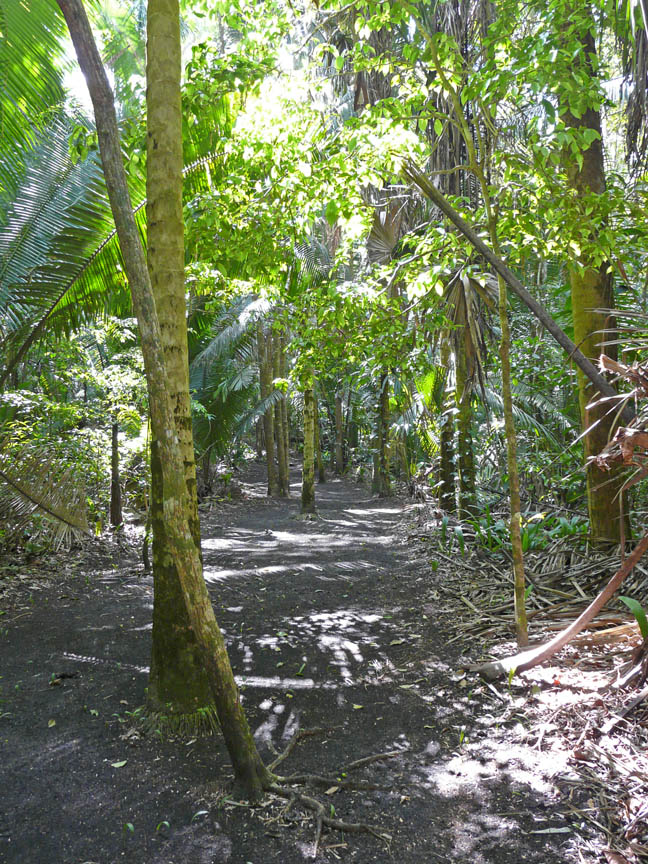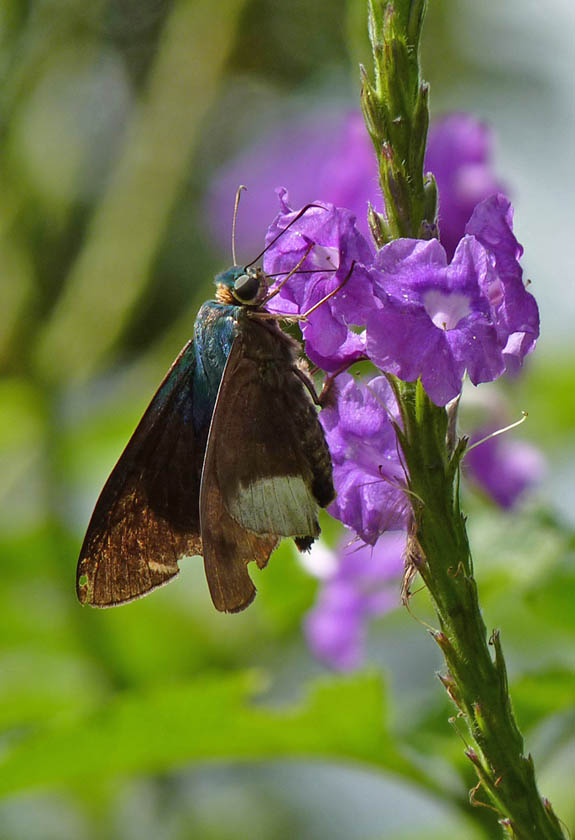Sunday 22 June 2008. Belize.
‘Oh, we do like to be beside the seaside’! Well, we do, which is why we now live there-on the coast of Nova Scotia, that is, not Belize. It’s beautiful but the Atlantic doesn’t quite have the intense turquoise colour of the Caribbean. Anyhow, a sight of the sea is always welcome and we had hopes of a bit of accessible mangrove, for those specialist species. We just had to get there.
On paper (i.e. the map) it didn’t look that far, but that was without factoring in Belizean roads. We set off immediately after breakfast (the decidedly birder-unfriendly ‘crack of 7.30 am’), aiming for Sarteneja. It seemed to take a long time to get there. Roads full of sharp bits of recently-harvested sugar cane made for slow going (and some worry about the state of the tyres) so it was lunchtime before we reached the sea.


That certainly lived up to the Caribbean ideal. Such an intense blue.
It was, however, surprisingly quiet birdwise. It’s always nice to see Magnificent Frigatebirds, of course; they are a bird that always spells ‘tropical’ for me, but it wasn’t adding much to our trip list. As for the mangroves, they weren’t really accessible here at all. It didn’t help that the tide was high. Hmm, what to do, now?

We turned our backs on the turquoise Caribbean and headed back towards a reserve we’d noticed on our way out here.
Shipstern Conservation and Management Area was a bit of a puzzle. We seemed to be the only visitors and to have surprised the wardens when we poled up. Still, we had to be guided and one of them duly took us for a walk round. He was a botanist, it seems, and took us on a newly-created botanical trail-intriguing, but not our primary interest. It had been quite a rudimentary clearing of the bamboo, with big machetes, I suppose, so there were sharp bits. It was inevitable, I suppose, that one of us would impale themselves on a spike, and that that one would be Mark-notorious for being too busy looking up in the trees to see where he is going. I was a bit concerned about a deep puncture wound to a foot in a jungle setting, but at least he was up to date on his tetanus jabs. He survived, his foot did get better, without going green and dropping off, but it was quite a wound.
We weren’t seeing too many birds. Admittedly, it was the hot part of the day (when tropical species tend to nod off for a while), and we were fairly racing round the trail. The guide mentioned that they had a nesting Ferruginous Pygmy-Owl on the grounds near the ranger station, but nobody knew where the nest hole was. ‘Oh’, said Mark. ‘You mean that one?’ And he pointed to a tree with a definite hole, an owlet peeking out and an adult bird nearby with a beak full of prey. Well, that was nice. We watched for some time, standing well back, as the adult delivered the prey to the excited owlet.
Ferruginous Pygmy-Owls, at the nest hole
So we have confused memories of Shipstern. I looked it up on the internet to remind myself of the park and was astonished at what I found. It’s quite large, based around the largest inland lagoon in Belize (we didn’t see it!) and has a mixed habitat of medium-sized semi-deciduous Yucatan forest and rare dry coastal tropical forest. It is home to many mammals, including the rare Baird’s Tapir and all five big cats (Jaguar, Puma, Ocelot, Jaguarundi, Marguay). It has over 300 bird species, including many Yucatan Endemics (the Yucatan Jay is the symbol of the park) and is the only known mainland habitat for the Black Catbird (so we were very lucky to come across one, normally you have to go out to the islands). We had no idea!

It seems that the park has developed somewhat since we were there. There is a proper visitor centre, a restaurant and even a ‘Birder’s Lodge’, with en-suite rooms. It offers a variety of guided trips for wildlife, and culture. It looks like a great place to explore-I don’t think we saw its best side in our visit. We could have really added to our bird list here.

Back to Crooked Tree, after a very warm drive back. Time for a final wander around the island. In a field behind one of the houses we came across a carcass. It looked pretty large, it might have been the remains left after a butchering job. Anyway, nature’s clean-up squad were hard at work on the corpse.


I don’t think they would leave much behind. Vultures sometimes get a bad press, but I like them. There would be a whole lot more nasty messes around, if it wasn’t for them.
Our last dinner at the lodge, and time for me to pack. It would be an easy trip back to Belize City in the morning for our flight home and, just maybe, another species, or two, on the way.
Cameras:
Sandra-Panasonic Lumix DMC-FZ18
Mark-Canon EOS Digital Rebel XTi, with 100-400 mm lens and Nikon Coolpix S210

















































































































































































































































































